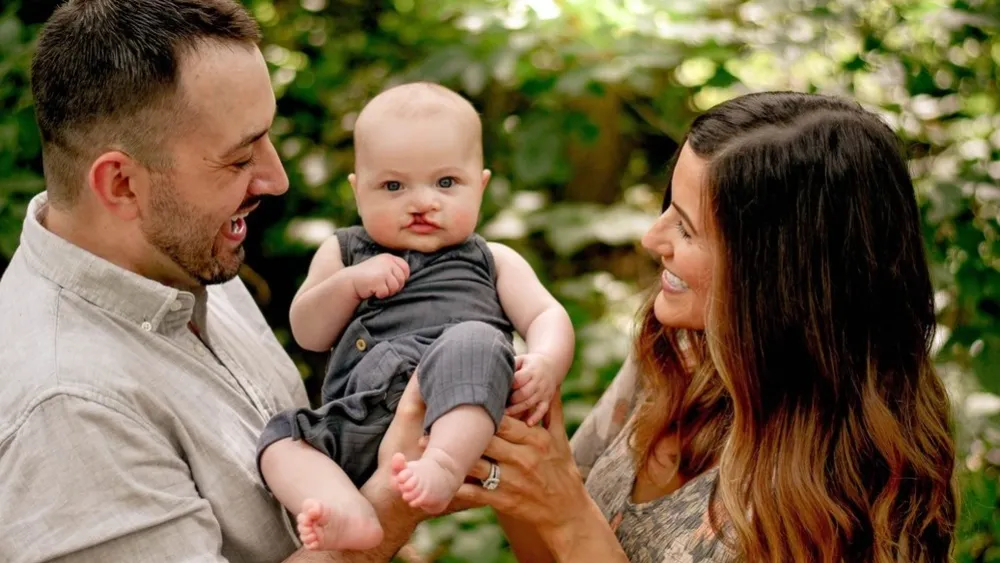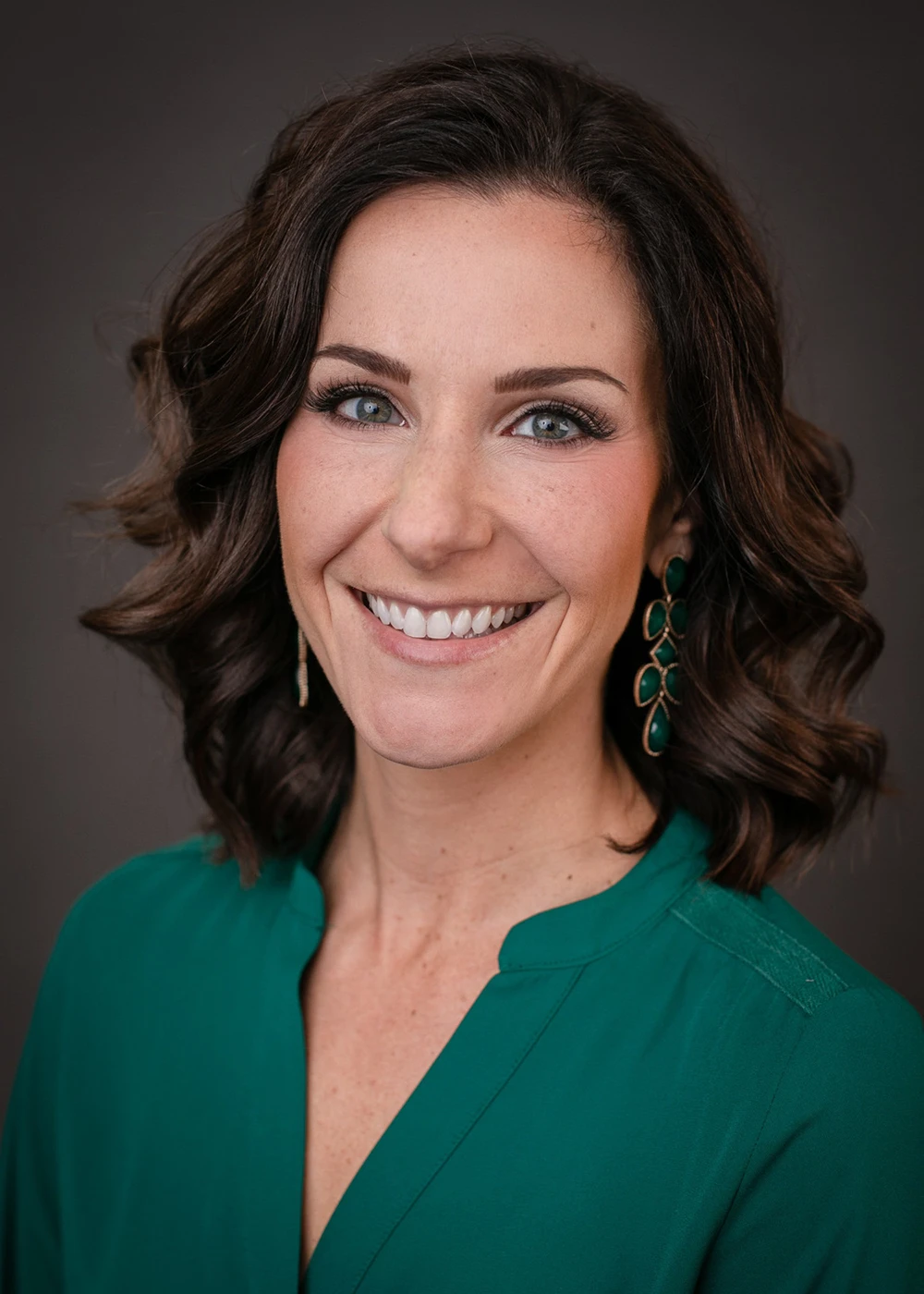




Family Health
Caring for a Child With a Cleft Lip and Palate: Methodist Physician and Mom Shares Her Story
Published: July 27, 2021

Photo Courtesy: StoopImages
Fresh off of maternity leave, Methodist hospitalist and geriatrician Kilie Donovan, MD, is like many first-time moms: eager to be back with her colleagues but missing those sweet baby snuggles every minute of every work day.
On March 29, Dr. Donovan and her husband welcomed a beautiful baby boy to their family. His name is just as cute as he is: Fitz Timothy – “the best thing we’ve ever done,” the proud mom shared in a recent social media post.
Fitz is a unique baby in a lot of ways. For starters, he’s a really good sleeper, and he’s always happy and giggly. He was also born with a cleft lip and palate – something Dr. Donovan wants people to know actually isn’t all that unique.
“Clefts occur in one of every 700 babies,” she said. “I had absolutely no idea how common they were.”
And that’s not the only thing she wants people – especially cleft parents – to know.
Read on to learn about the highs and lows of her cleft journey as she aims to spread awareness while providing peace and encouragement.
Tell us about your pregnancy journey.
Dr. Donovan: My husband and I have been married for 10 years. We delayed having kids for a long time while we were both still in school/training – he’s a physician, too. We got lucky and got pregnant very quickly when we started trying. I was pretty sick until 14-15 weeks. But otherwise, I had a great pregnancy with no complications at all – I honestly felt great through most of it.
I worked up until the day before my due date. Someday I’ll be proud to tell Fitz that he worked through the COVID-19 pandemic with his mama!
I have an identical twin sister who had identical twin boys nine days before Fitz. She and I both delivered at Methodist Women’s Hospital. It was a lot of fun being pregnant at the same time and, now, having boys so close together in age.
When were you made aware of Fitz’s cleft lip and palate? Any intuition prior to that point?
Dr. Donovan: We found out at our 20-week anatomy scan. We had done the noninvasive prenatal blood testing in the first trimester, so we knew that he didn’t have any major chromosomal abnormalities. We also knew that he was a boy. I didn’t have any inclination that anything was wrong beforehand or even during the scan.
The ultrasound technician had a very hard time getting a picture of his face. She told us we might have to come back in a week to get a better look since he wasn’t being cooperative. I didn’t know any better at the time – I just thought it was a box to check off.
When we went to see my Methodist OB/GYN, Darrick Peters, DO, he broke the news that there might be a cleft, but he wasn’t sure because they couldn’t get a good view of his face.
He set us up to see Methodist maternal-fetal medicine specialist Brendan “Dan” Connealy, MD, a few days later. After another ultrasound, Dr. Connealy confirmed that Fitz did have a cleft lip and probably a cleft palate.
When Fitz was born, it was confirmed: He had a complete unilateral cleft lip, meaning the entire lip to the nose and alveolar bone (where his teeth will come in) were affected. He also had a complete cleft palate, meaning both the hard palate at the front of the mouth and the soft palate in the back didn’t develop appropriately.
Talk about your thoughts, feelings and emotions when you learned of Fitz’s condition. What were some of your biggest concerns?
Dr. Donovan: At first, I was so shell-shocked that I didn’t really process it.
A cleft lip/palate wasn’t on my top 20 list of worries. I was more worried about other things, like heart defects, his kidneys developing normally, etc. It took me a while to come to terms with it, and I was so worried that there would be something else wrong. About 30% of babies with cleft lip/palate have it as part of a syndrome, meaning it goes along with other abnormalities.
We declined to do any invasive testing to look for other issues during pregnancy, but we have since found out that his cleft lip is isolated – or nonsyndromic – meaning there don’t seem to be any other issues or an associated syndrome.
There was (and sometimes still is) a LOT of guilt that I did something wrong – that I caused this to happen – even though I know that’s not the case.
As we learned more about cleft lip and palate, I worried about what he was going to go through. People often think it’s just a simple cosmetic fix. Unfortunately, it’s so much more than that. The cleft palate in particular affects hearing, eating, swallowing, speech, and breathing.
I worried (and still do worry) that he will get bullied or teased in school for being different. At the same time, I also grieved the picture I had in my head of our little boy and needed to wrap my head around what our new normal might become. My baby was going to have to go through a lot, and it was going to be hard on him and us.
I also always thought I would breastfeed and was looking forward to that experience. Fitz isn’t able to nurse due to his cleft palate, which was really sad for me. Luckily, I’m able to pump and give him breast milk that way.
So, what does feeding look like?
Dr. Donovan: Feeding is a big issue for cleft babies.
Fitz can’t use a regular bottle because he can’t suck. The best analogy for that? It’s like trying to suck from a straw that has a slit cut up the whole side – he can’t get any suction.
He uses a bottle that comes with a special one-way valve that keeps milk in the nipple, so he basically “chomps” on it instead of sucking. This can be very difficult for babies to figure out, and it’s not unusual for them to go to the neonatal intensive care unit (NICU) for feeding assistance after birth.
Fitz took a bottle shortly after his birth, though, and caught on right away. I’ve never been so proud! He takes longer to eat and burns more calories doing it, so we follow very closely with his Methodist pediatricians Natalie Fleming, MD, and Matthew Gibson, MD, to make sure he’s gaining weight and growing appropriately. He’s doing great and we’ve had no issues so far.
Methodist Women’s Hospital is also extremely lucky to have neonatal feeding specialist Amanda Lovercheck, SLP. She specializes in feeding cleft babies and was incredibly helpful and reassuring to us before and after Fitz was born.
What other kind of support has your care team provided?
Dr. Donovan: Dr. Peters and Dr. Connealy are amazing. Kudos to them for walking us through this journey and handling all my questions and anxiety.
Dr. Connealy referred us to a plastic surgeon at Boys Town National Research Hospital who is a part of the interdisciplinary Cleft and Craniofacial Clinic there.
Our prenatal consultation at Boys Town really helped set our minds at ease. We then saw the whole clinic during a three-hour appointment two weeks after Fitz was born for his initial evaluation. We’ll continue to visit the clinic at least yearly until Fitz is at least 21.
What does short- and long-term treatment look like for Fitz?
Dr. Donovan: Every cleft journey is different, and it’s hard to know exactly how many surgeries Fitz will need. He’ll need at least four, but it’s likely he’ll need more than that.
Fitz had his first surgery on July 27. When he’s between 9 and 12 months old, he’ll have his palate repaired, which is a tough surgery. He might require an additional surgery for his soft palate in a couple years, but we won’t know for sure until he’s a little older.
Between the ages of 8 and 10, he’ll have a bone graft taken from his hip and used to create the alveolar bone that’s missing (his gum line). And when he’s a little older, he’ll likely need dental implants in that area.
As their faces grow, many kiddos need or want to have jaw surgery, lip revision, and/or rhinoplasty.
Any idea what could have caused this? Is there any family history of clefting?
Dr. Donovan: We have no family history of clefting that we are aware of. While clefting can definitely run in families, it also can be associated with certain medications or vitamin deficiencies, none of which were the case for us – just a random thing that happened and likely due to a combination of genetic and environmental factors.
Have there been any blessings to come from Fitz’s condition?
Dr. Donovan: I wish more than anything that Fitz didn’t have to go through this. If there was a blessing, it would be showing how strong we are as a family. Taking care of a child with special or increased medical needs is stressful and hard, and I’m proud of how my husband and I have handled it together.
Do you think there are any misconceptions about cleft lip and palate? What do you want people to know about it?
Dr. Donovan: One of the most hurtful things people said to me was, “Well, it could always be worse.” Yes, it definitely could be, but I don’t think a lot of people realize how much these cleft babies have to go through. Again, it’s not a quick cosmetic fix. Oh, how I wish it was. It’s a lot of doctor’s visits, surgeries, speech therapy and more.
What advice would you give other parents who may be just entering their journey through cleft lip and palate?
Dr. Donovan: There is a huge cleft community online, and I would encourage any expecting cleft moms and dads to reach out and get involved. It’s been so therapeutic for me to talk to other mamas who’ve walked this path and come out the other side or are going through it right now, too.
More than anything, I want them to know: It’s a big thing that’s not a big thing.
I initially felt so alone going through this. This is common. So, please remember: You are not alone.
More Resources
- Learn more about cleft lip and palate.
- Find online support for cleft lip and palate.
- Find an OB/GYN.
- Learn more about maternal-fetal medicine at Methodist.


